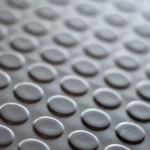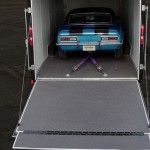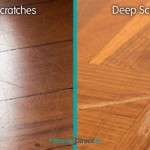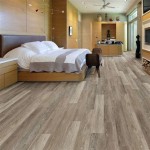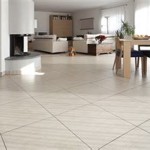Selecting the Right Bamboo Flooring Glue: A Comprehensive Guide
Bamboo flooring presents a sustainable and aesthetically pleasing alternative to traditional hardwood flooring. Its durability, renewability, and unique appearance make it a popular choice for both residential and commercial properties. However, the successful installation and longevity of bamboo flooring are heavily reliant on the adhesive used. Selecting the correct bamboo flooring glue is crucial to prevent issues such as warping, cupping, delamination, and squeaking. This article provides a comprehensive overview of the different types of adhesives available, factors to consider when choosing the right one, and best practices for application.
Adhesives used for bamboo flooring installations need to possess specific characteristics to ensure a strong and lasting bond between the flooring planks and the subfloor. These characteristics include adequate adhesion strength, flexibility, moisture resistance, and compatibility with the specific type of bamboo flooring being installed. Different types of subfloors, such as concrete, plywood, or existing flooring, will also necessitate different adhesive formulations. Understanding these nuances is paramount in achieving a professional and long-lasting result.
Furthermore, environmental considerations are becoming increasingly important. Low-VOC (Volatile Organic Compound) adhesives are preferred to minimize indoor air pollution and contribute to a healthier living environment. The selection process should also consider the adhesive's cure time, ease of application, and clean-up requirements. This guide will delve into each of these aspects to facilitate an informed decision-making process.
Understanding Different Types of Bamboo Flooring Glue
Several types of adhesives are commonly used for bamboo flooring installation, each with its own advantages and disadvantages. The most prevalent types include polyurethane adhesives, modified silane polymer (MSP) adhesives, acrylic adhesives, and epoxy adhesives. Understanding the properties of each type is critical for selecting the most suitable adhesive for a specific project.
Polyurethane Adhesives: Polyurethane adhesives are known for their strong bond strength and excellent moisture resistance. These adhesives cure through a chemical reaction with moisture in the air or the subfloor, forming a rigid and durable bond. They are suitable for a wide range of subfloors and are particularly effective in areas with high humidity or potential moisture exposure. However, polyurethane adhesives can be relatively expensive and may require specialized equipment for application. They also tend to have a longer curing time compared to other types of adhesives.
Modified Silane Polymer (MSP) Adhesives: MSP adhesives offer a balance of strength, flexibility, and ease of use. They are formulated to provide a strong bond while allowing for some movement in the flooring, which can be beneficial in environments with fluctuating temperatures or humidity levels. MSP adhesives are also low in VOCs, making them a more environmentally friendly option. They generally have good adhesion to various subfloors and are relatively easy to clean up. Their versatility and favorable environmental profile make them a popular choice for bamboo flooring installations.
Acrylic Adhesives: Acrylic adhesives are water-based and offer good initial tack and ease of application. They are generally less expensive than polyurethane or MSP adhesives, making them a budget-friendly option. However, acrylic adhesives may not provide the same level of moisture resistance or bond strength as other types, and they may not be suitable for all subfloor types. They are typically best suited for installations in dry environments with stable humidity levels and on porous subfloors that allow for proper bonding.
Epoxy Adhesives: Epoxy adhesives are known for their exceptional strength and chemical resistance. They form a very rigid and durable bond, making them suitable for high-traffic areas or environments where the flooring may be exposed to harsh chemicals. However, epoxy adhesives can be difficult to work with, requiring precise mixing and application techniques. They also tend to be more expensive than other adhesive types and may not offer the same level of flexibility. Their use is less common in residential bamboo flooring installations but may be appropriate for specific commercial applications.
Key Factors to Consider When Choosing Bamboo Flooring Glue
Selecting the appropriate adhesive for bamboo flooring involves careful consideration of several key factors. These include the type of bamboo flooring being installed, the type of subfloor, environmental conditions, and specific performance requirements. A thorough assessment of these factors will help ensure the selection of an adhesive that provides a strong, durable, and long-lasting bond.
Type of Bamboo Flooring: Different types of bamboo flooring, such as solid bamboo, strand-woven bamboo, and engineered bamboo, have varying densities and dimensional stability. Strand-woven bamboo, for example, is significantly denser and more resistant to moisture than solid bamboo. Therefore, it requires an adhesive with a higher bond strength and better moisture resistance. Engineered bamboo, on the other hand, may be more susceptible to dimensional changes and may benefit from an adhesive with greater flexibility. The manufacturer's recommendations should always be consulted to determine the most suitable adhesive for the specific type of bamboo flooring.
Subfloor Type: The type of subfloor is a critical factor in adhesive selection. Common subfloor types include concrete, plywood, OSB (Oriented Strand Board), and existing flooring such as vinyl or tile. Concrete subfloors require adhesives that can withstand alkalinity and moisture vapor transmission. Plywood subfloors, being wood-based, may absorb moisture and expand or contract, requiring an adhesive that can accommodate these dimensional changes. OSB is generally not recommended as a subfloor for bamboo flooring due to its instability and potential for delamination. Existing flooring may require surface preparation or the use of a specific adhesive designed for bonding to that particular material.
Environmental Conditions: Environmental conditions, such as temperature and humidity, can significantly impact the performance of bamboo flooring and the adhesive. High humidity levels can cause bamboo flooring to expand, while low humidity levels can cause it to contract. The adhesive must be able to withstand these dimensional changes without losing its bond strength. In areas with fluctuating temperatures or humidity levels, a flexible adhesive, such as an MSP adhesive, is generally recommended. In areas with high moisture exposure, a moisture-resistant adhesive, such as a polyurethane adhesive, is preferred.
Performance Requirements: Specific performance requirements, such as sound reduction or impact resistance, may also influence adhesive selection. Some adhesives are formulated to provide additional sound insulation, which can be beneficial in multi-story buildings. Others may offer better impact resistance, which can be important in high-traffic areas or environments where the flooring is likely to be subjected to heavy impacts. The manufacturer's specifications should be reviewed to determine if an adhesive meets the specific performance requirements of the project.
Best Practices for Applying Bamboo Flooring Glue
Even the best adhesive will fail if not applied correctly. Adhering to best practices for application is essential for achieving a strong, durable, and long-lasting bond between the bamboo flooring and the subfloor. These best practices include proper subfloor preparation, adhesive application techniques, and curing procedures. Failure to follow these guidelines can result in flooring failures and costly repairs.
Subfloor Preparation: Proper subfloor preparation is crucial for ensuring adequate adhesion. The subfloor must be clean, dry, level, and structurally sound. Any existing flooring, debris, or contaminants should be removed. Concrete subfloors should be tested for moisture content and alkalinity. Moisture levels should be within the acceptable range specified by the adhesive manufacturer. Uneven subfloors should be leveled using a self-leveling compound. Plywood subfloors should be properly fastened and free of any loose or damaged areas. The subfloor should be primed according to the adhesive manufacturer's instructions to improve adhesion.
Adhesive Application: The adhesive should be applied according to the manufacturer's instructions, using the recommended trowel size and application rate. The trowel size determines the amount of adhesive that is applied to the subfloor. Using the wrong trowel size can result in insufficient or excessive adhesive application, both of which can compromise the bond. The adhesive should be applied evenly and consistently across the subfloor, avoiding any gaps or voids. The open time, which is the amount of time the adhesive can remain exposed before the flooring is installed, should be strictly adhered to. Installing the flooring after the open time has expired can result in a weak or non-existent bond.
Curing Procedures: The adhesive should be allowed to cure fully according to the manufacturer's instructions. The curing time can vary depending on the type of adhesive, the temperature, and the humidity. During the curing process, the flooring should be protected from traffic and moisture. Heavy objects should not be placed on the flooring until the adhesive has fully cured. Adequate ventilation should be provided to facilitate the curing process and minimize exposure to VOCs. Following the manufacturer's recommended curing procedures is essential for achieving the adhesive's full strength and performance potential.
In conclusion, selecting and applying the correct bamboo flooring glue is a critical aspect of ensuring a successful and long-lasting installation. By understanding the different types of adhesives available, considering the key factors influencing adhesive selection, and adhering to best practices for application, one can achieve a durable and aesthetically pleasing bamboo floor that will provide years of enjoyment. Careful planning and execution are essential for maximizing the benefits of this sustainable and versatile flooring option.

Roberts 4 Gal Maxcomplete Polyurethane Adhesive For Engineered Wood Solid Parquet And Bamboo Flooring 1550 The Home Depot

How To Fit Bamboo Flooring Onto Chipboard The Company

Osmo Ms Trade Wood Flexible Flooring Adhesive 15kg The Bamboo Company

Glue Down Installation Bamboo Hardwood Floor Over Concrete Slab Wood Sub

Roberts 4 Gal Maxcomplete Polyurethane Adhesive For Engineered Wood Solid Parquet And Bamboo Flooring 1550 The Home Depot
How To Glue Down A Bamboo Floor On Vimeo

Roberts 1509 4 Gal Construction Adhesive 43z142 R1509 Grainger

Roberts 4 Gal Wood And Bamboo Flooring Urethane Adhesive R1509 The Home Depot

100 Phenolic Glue Bamboo Flooring Factory From China Plywood Marine Made In Com

How To Install Bamboo Flooring Floated Diy Method

